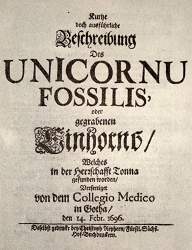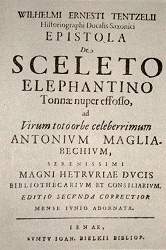Travertine of Burgtonna
Useful Information

| Location: |
() |
| Open: | Museum der Natur Gotha: MAY-OCT Tue-Sun 10-17. NOV-APR Tue-Sun 9-16. |
| Fee: | Museum der Natur Gotha: Adults 4,-, Reduced 2,-. Group (10+): Adults 3,-, Reduced 1,50. Group (30+): Adults 2,50, Reduced 1,50. Family 9,-. |
| Classification: | travertine |
| Light: | n/a |
| Dimension: | |
| Guided tours: | The travertine is quarried, visits are not possible |
| Photography: | |
| Accessibility: | |
| Bibliography: |
H.-D. Kahlke (ed.) (1978): Das Pleistozän von Burgtonna in Thüringen. Quartärpaläontologie. 3: 1-399, 137 Abb, 56 Taf., 46 Tab.; Berlin (Akademie Verlag). Lutz Christian Dr. Maul (1994): Erster Nachweis von Hystrix in der Pleistozän-Fundstelle Burgtonna (Thüringen, Mitteldeutschland). - Säugetierkd. Inform., 18 (3): 673-682; Jena. J.-A. Keiler (1995): Libellenlarvenreste (Odonata: Anisoptera) aus dem letztinterglazialen Travertin von Burgtonna / Thüringen. - Beitr. geol. Thür. N. F., 2: 101-106, Jena. Lutz Christian Dr. Maul: Die Kleinsäugerfauna aus dem Hystrix-Horizont der Pleistozänfundstelle Burgtonna (Thüringen, Mitteldeutschland) |
| Address: | Museum der Natur, Schloßpark, Parkallee 15, D-99867 Gotha, Tel: +49-3621-823010, Fax: +49-3621-852130 |
| As far as we know this information was accurate when it was published (see years in brackets), but may have changed since then. Please check rates and details directly with the companies in question if you need more recent info. |
|
History
| 13th century | first signs of the quarrying of travertine at Burgtonna. |
| 1695 | first discoveries of "etliche schreckliche große Beine" (some strange big bones) during quarrying. |
| 1696 | a scientific dispute between Wilhelm Ernst Tenzel and the Collegium medicum in Gotha about fossil Elephant remains in the travertine of Burgtonna is the first evidence of quarternary palaeontological research in Thüringen. |
| 1699 | again bones found. |
Description

The travertine of Burgtonna was formed since the Eem interglazial, more than 70.000 years BP. A karst spring formed the travertine, the water of the spring came from the limestone ridge Fahner Höhe.
1695 during quarrying works "etliche schreckliche große Beine" (some strange big bones) were found. The Herzogliche Kammer in Gotha was informed about this. The young duke Friedrich II. came with his cortege to Burgtonna to visit the site. The finders, farmers from Burgtonna, thought this were the bones of a huge animal which was unknown to them.
This discovery lead to a vehement dispute between scientists. The Historiograph Wilhelm Ernst Tentzel had the "mad" theory, this could be the remains of an animal which really lived her once. This was really unbelievable to the other scientists, as they could not imagine the necessary climatic changes. The medicus Raab and later the Gelehrte Collegium Medicum had the theory, it was a mineral formation.
Wilhelm Ernst Tentzel discerned parts of an elephant skeleton. Andactually the bones were remains of a forest elephant, that lived in Thüringen 100.000 years ago.
In 1699, when a second discovery of bones was made nearby, his theory became widely accepted. But the dispute already made Burgtonna world famous. The discoveries were the start of 300 years of palaeontological research and a world famous collection in the Museum der Natur Gotha (Museum of Nature in Gotha).
The Museum der Natur Gotha has an exhibition ofobjects from Burgtonna and explains the history of the palaeontological research. It has a huge collection of fossils which is accessible to researchers.
Because of the ongoing quarry works in Burgtonna, regular visits and yearly diggings are made to collect new fossils.
- See also
 Search DuckDuckGo for "Travertine of Burgtonna"
Search DuckDuckGo for "Travertine of Burgtonna" Entwicklung und Anwendung der Th/U-Mikroprobendatierung an quartären Travertinen aus Mitteleuropa (
Entwicklung und Anwendung der Th/U-Mikroprobendatierung an quartären Travertinen aus Mitteleuropa ( )
) Forschungsstation für Quartärpaläontologie Weimar (
Forschungsstation für Quartärpaläontologie Weimar ( )
) Quartärpaläontologie, (
Quartärpaläontologie, ( )
) Museum der Natur Gotha (
Museum der Natur Gotha ( )
) Museum der Natur Gotha (
Museum der Natur Gotha ( )
) Museum der Natur Gotha (
Museum der Natur Gotha ( )
)
 Index
Index Topics
Topics Hierarchical
Hierarchical Countries
Countries Maps
Maps